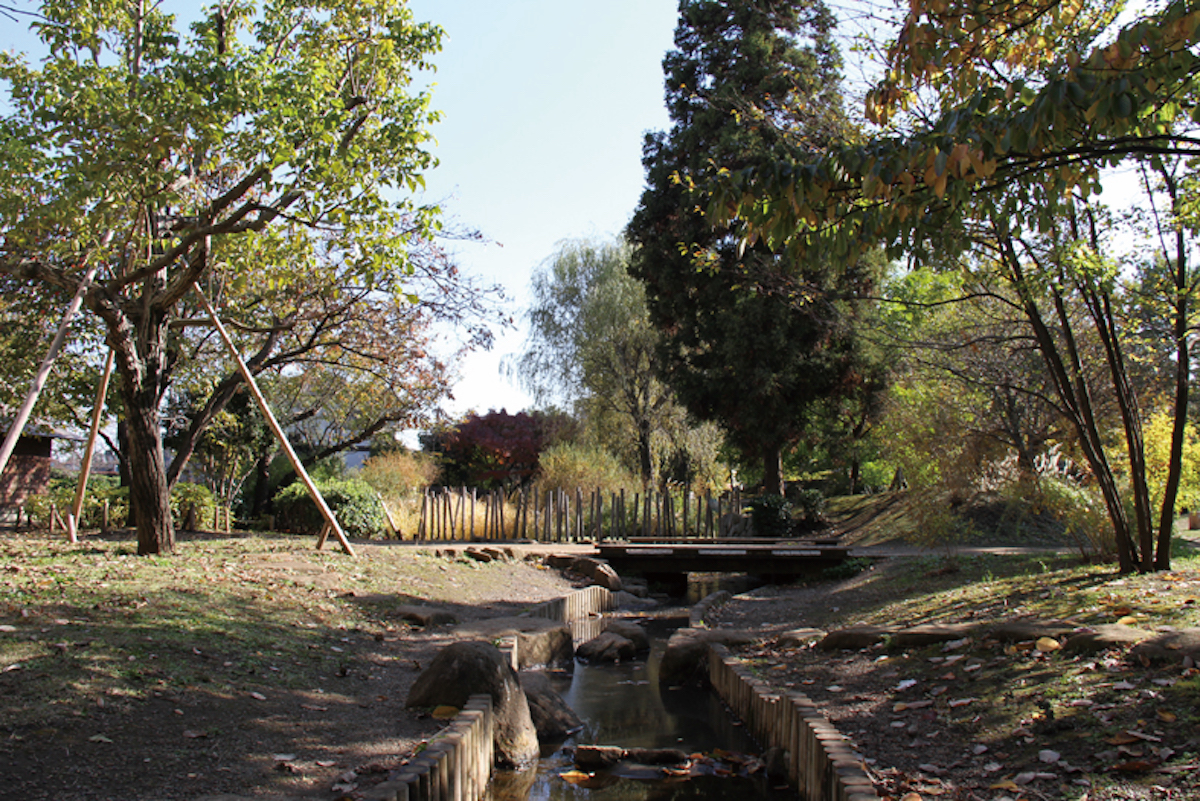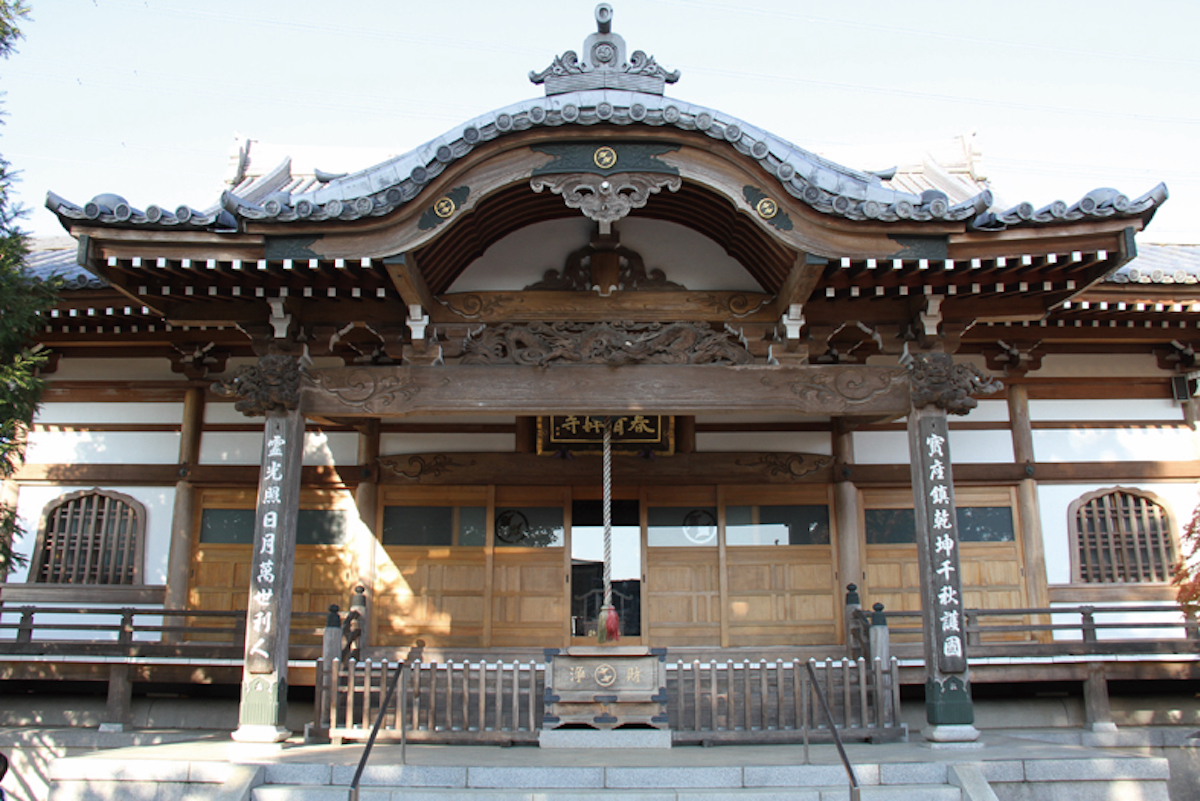Course images can be enlarged

Map image can be enlarged

Temples and Archaeological sites in Senkawa River Area
This course along the Senkawa River includes Mitaka Agricultural Park, Senkawa Peace Park with “Anne Frank Rose” and Peace Memorial Statue, Katsubuchi Shrine with Katsuie Shibata’s helmet mound, Maruike-no Sato Park with its rich environment, Shimayashiki Iseki (archaeological site), a medieval residence, Tenjinyama Castle Ruins, and Shunseiji Temple, where Katsushige Shibata is buried. The course is full of sights that will remind you of the history of Mitaka.
1 Senkawa Peace Park

In Senkawa Peace Park across the Senkawa River, you can see the “Statue of Peace” by Seibo Kitamura, a rose by Anne Frank, a plane tree that was destroyed in the war, and other symbols of peace that Mitaka City aims for. In spring, cherry blossoms in full bloom color the riverside, and water birds and river fish can be seen swimming in the clear water.
2 Katsubuchi Shrine (Kabutozuka)

Katsubuchi Shrine has long been affectionately called “Myojin-sama” by the locals, and has been worshipped as the god of water and the god of childbirth. In the precincts of the shrine, there is a “helmet mound” where Katsushige Shibata, who ruled this area in the early Edo period, is said to have enshrined the golden helmet of his grandfather Katsuie, a famous warlord, and it is a spot to remember the history of the area. (Registered as a Mitaka City Registered Historic Site on June 6, 2012)
3 Maruike-no Sato Park

In 1994, Mitaka City made a plan to revive Maruike Pond, which was reclaimed in 1969, and local residents participated in restoring the former landscape to its original state. With rice paddies, ponds, fields, and wooded areas, the park has a rich natural environment similar to a satoyama, where a wide variety of creatures live.
4 Asia-Africa-Library
The library opened in 1958. The library, which boasts a long history, holds approximately 20,000 volumes and offers access to original books, English-language books, and Japanese-language books on languages and cultures mainly from Asia, the Arab world, and Africa, books that cannot be found anywhere else.
☎ 0422-44-4640(Please inquire for details about use.)
5 Shimayashiki Iseki (archaeological site)

Excavations have revealed that people have lived in this “island-like” terrain surrounded by the meandering Senkawa River for about 30,000 years. The name “Shimayashiki” was handed down from people in the late Edo period who saw the remains of the residences of the samurai who lived here in the medieval and early modern periods. The remains of an early Edo period camp are presumed to have belonged to the Shibata clan that ruled the area.
6 Tenjinyama Iseki (archaeological site)

At the southern end of the Tenjinyama Site, in a wooded area along the Senkawa River, the remains of a castle dating back to the Warring States Period (probably the first half of the 16th century), which skillfully utilized the natural terrain, can still be seen. The “moat-cutters” and “earthen mounds” that remain today tell of Mitaka’s medieval history, which is still unknown to the public. The area is now open to the public as Shinkawa Tenjinzan Youth Plaza.
7 Shunseiji Temple

Shunseiji Temple is known as the family temple of Katsushige Shibata. Katsushige served Ieyasu Tokugawa and was awarded the land of Senkawa for his achievements in the Battle of Sekigahara and the Osaka Summer Campaign. Katsushige’s grave is a Hokyointo-type, which is allowed only for those of high rank, and it is the only one of its kind in Mitaka City for a samurai family. ☎ 0422-44-0031
☎ 0422-44-0031
- Area1 The Neighborhood of JR Mitaka Station
- Area2 Ghibli Museum, Mitaka and Mitaka City Yuzo Yamamoto Memorial Museum
- Area3 Historic Footsteps of the Japanese Author, Dazai
- Area4 Inokashira Onshi Park and Inokashira Nature Garden
- Area5 The Middle Eastern Cultural Center in Japan, and ICU Hachiro Yuasa Memorial Museum |Kondo Isami / Village of Osawa
- Area6 National Astronomical Observatory of Japan, Mitaka Campus, and Mitaka Picture Book House in the Astronomical Observatory Forest|Jindai Botanical Gardens, and Jindaiji
- Area7 Historic Site: Katsubuchi-Jinja
- Area8 Kanda River Headwaters|Tamagawa Aqueduct / Town Where Miki Rofu Resided
- TOP PAGE